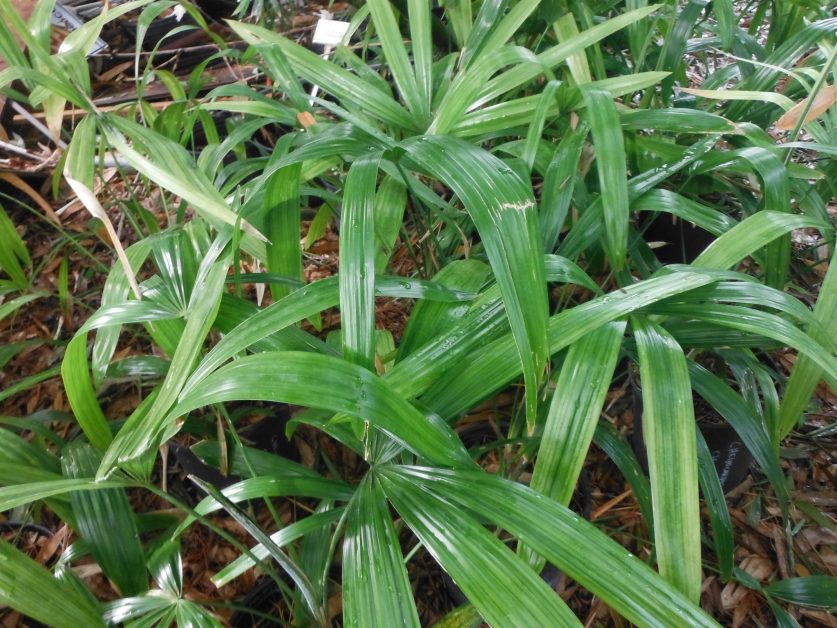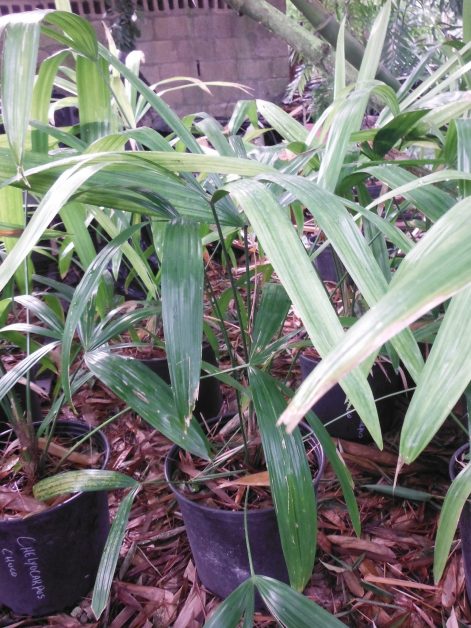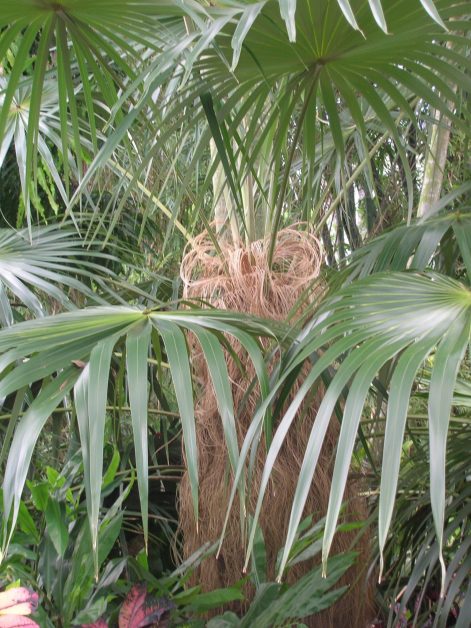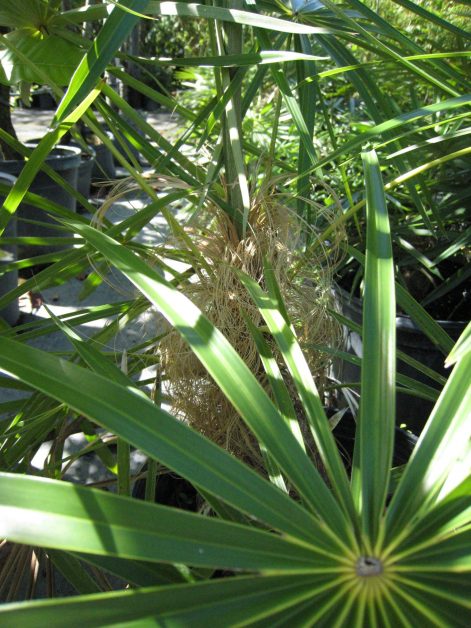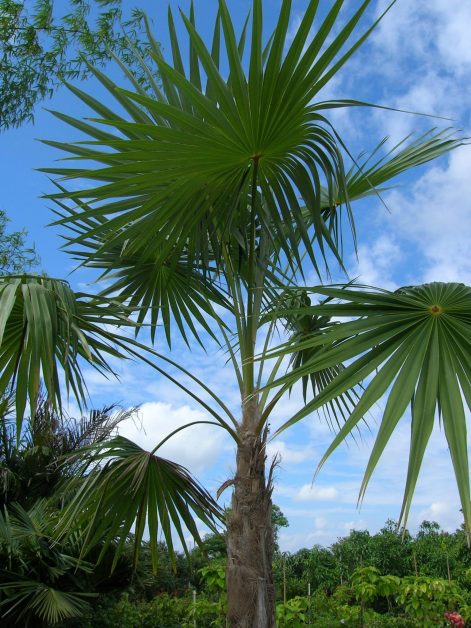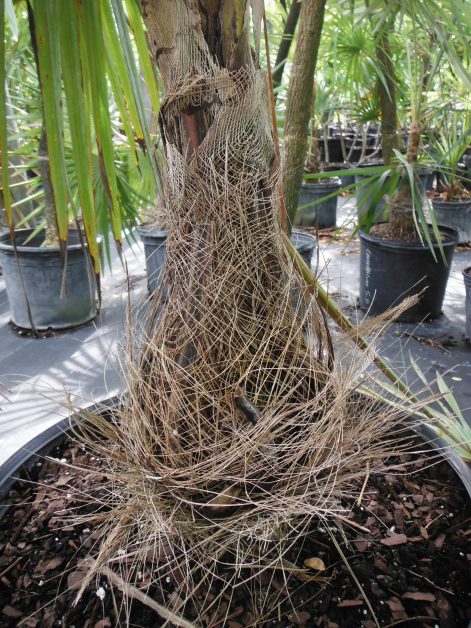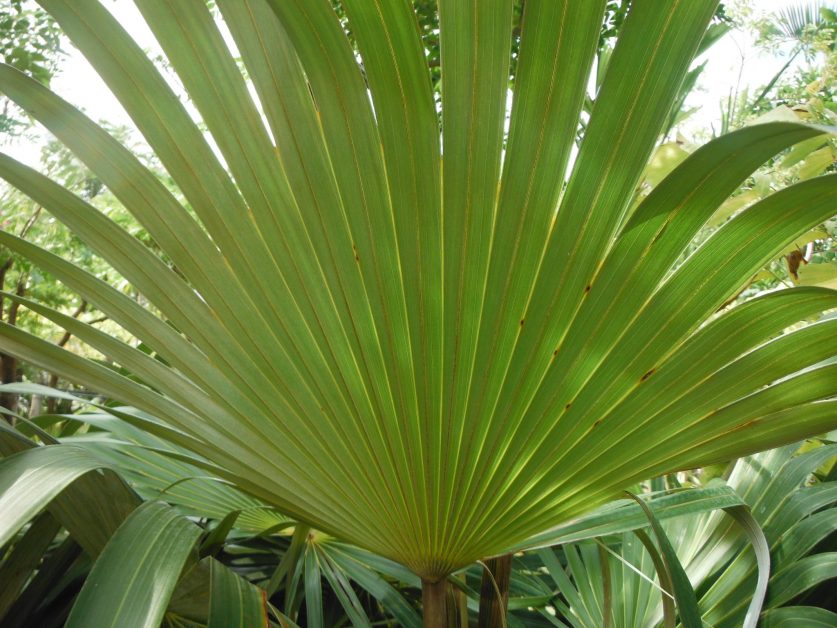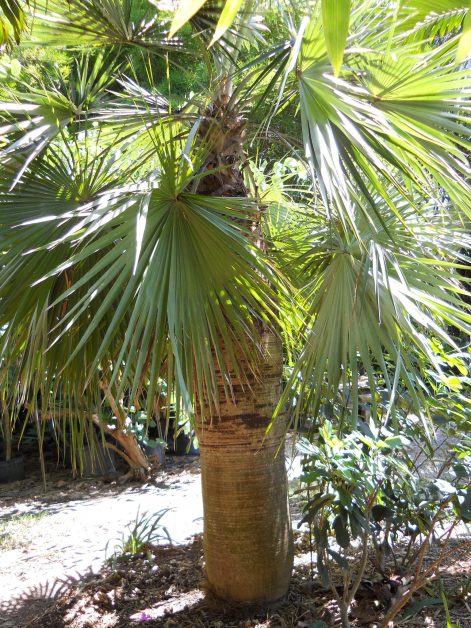Palms to Herald the Rainy Season, Part II
We continue with our survey of palms you should consider planting at the start of the rainy season:
Chelyocarpus chuco, a native of Bolivia and Brazil, is still uncommon locally. It produces glossy, circular palmate leaves and grow to 30-40 ft. in southern Florida. Seedlings need light shade, but older plants handle full sun. This species thrives in moist soils and can withstand 30-32 degrees.
Coccothrinax crinita, the popular Old Man Palm, is endemic to Cuba. The undersides of its palmate leaves are silvery. In our region, this sun-loving species can reach 25 ft. slowly. It requires moderate water and good drainage, but is drought-tolerant once established.
Coccothrinax miraguama, another palm endemic to Cuba, is noted not only for the silvery undersides of its palmate leaves, but also for the interesting pattern of fibers on its trunk. It encompasses four subspecies. Mature height is 15-20 ft. Provide a sunny setting, moderate water, and good drainage.
Coccothrinax proctorii, endemic to the Cayman Islands, is another member of its genus to feature leaves which are silvery on the undersides. Plant it in a sunny exposure. It requires moderate water and good drainage, but once established, it is drought-tolerant. Mature height is 15-25 ft.
Coccothrinax spissa differs from most other species in the genus: 1) Seedlings require some shade and 2) The trunk is fairly stout and often swollen in the middle. Native to Hispaniola, it reaches 15-20 ft. in our region. Provide sun and moderate watering. Once established, it tolerates drought well.
- Chelyocarpus chuco (Round Leaf Palm)
- Chelyocarpus chuco (Round Leaf Palm)
- Coccothrinax crinita (Old Man Palm)
- Coccothrinax crinita (Old Man Palm)
- Coccothrinax miraguama (Miraguama Palm)
- Coccothrinax proctorii (Proctor’s Silver Palm)
- Coccothrinax proctorii (Proctor’s Silver Palm)
- Coccothrinax spissa (Swollen Silver Thatch Palm)
